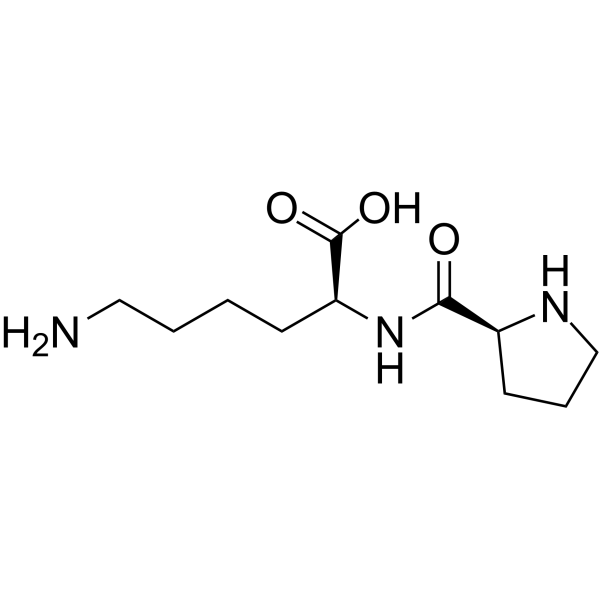H-Pro-Lys-OH acetate salt
Modify Date: 2025-08-26 14:55:48

H-Pro-Lys-OH acetate salt structure
|
Common Name | H-Pro-Lys-OH acetate salt | ||
|---|---|---|---|---|
| CAS Number | 71227-70-8 | Molecular Weight | 243.30 | |
| Density | 1.2±0.1 g/cm3 | Boiling Point | 518.0±50.0 °C at 760 mmHg | |
| Molecular Formula | C11H21N3O3 | Melting Point | N/A | |
| MSDS | N/A | Flash Point | 267.1±30.1 °C | |
Use of H-Pro-Lys-OH acetate saltH-Pro-Lys-OH is a dipeptide containing proline and lysine, which can serve as a substrate for iminodipeptidase (prolinase). H-Pro-Lys-OH can also be used for the synthesis of polypeptides[1][2]. |
| Name | H-Pro-Lys-OH |
|---|---|
| Synonym | More Synonyms |
| Description | H-Pro-Lys-OH is a dipeptide containing proline and lysine, which can serve as a substrate for iminodipeptidase (prolinase). H-Pro-Lys-OH can also be used for the synthesis of polypeptides[1][2]. |
|---|---|
| Related Catalog | |
| References |
| Density | 1.2±0.1 g/cm3 |
|---|---|
| Boiling Point | 518.0±50.0 °C at 760 mmHg |
| Molecular Formula | C11H21N3O3 |
| Molecular Weight | 243.30 |
| Flash Point | 267.1±30.1 °C |
| Exact Mass | 243.158295 |
| LogP | -1.53 |
| Vapour Pressure | 0.0±2.9 mmHg at 25°C |
| Index of Refraction | 1.522 |
| L-Lysine, L-prolyl- |
| l-pro-l-lys |
| L-Prolyl-L-lysine |